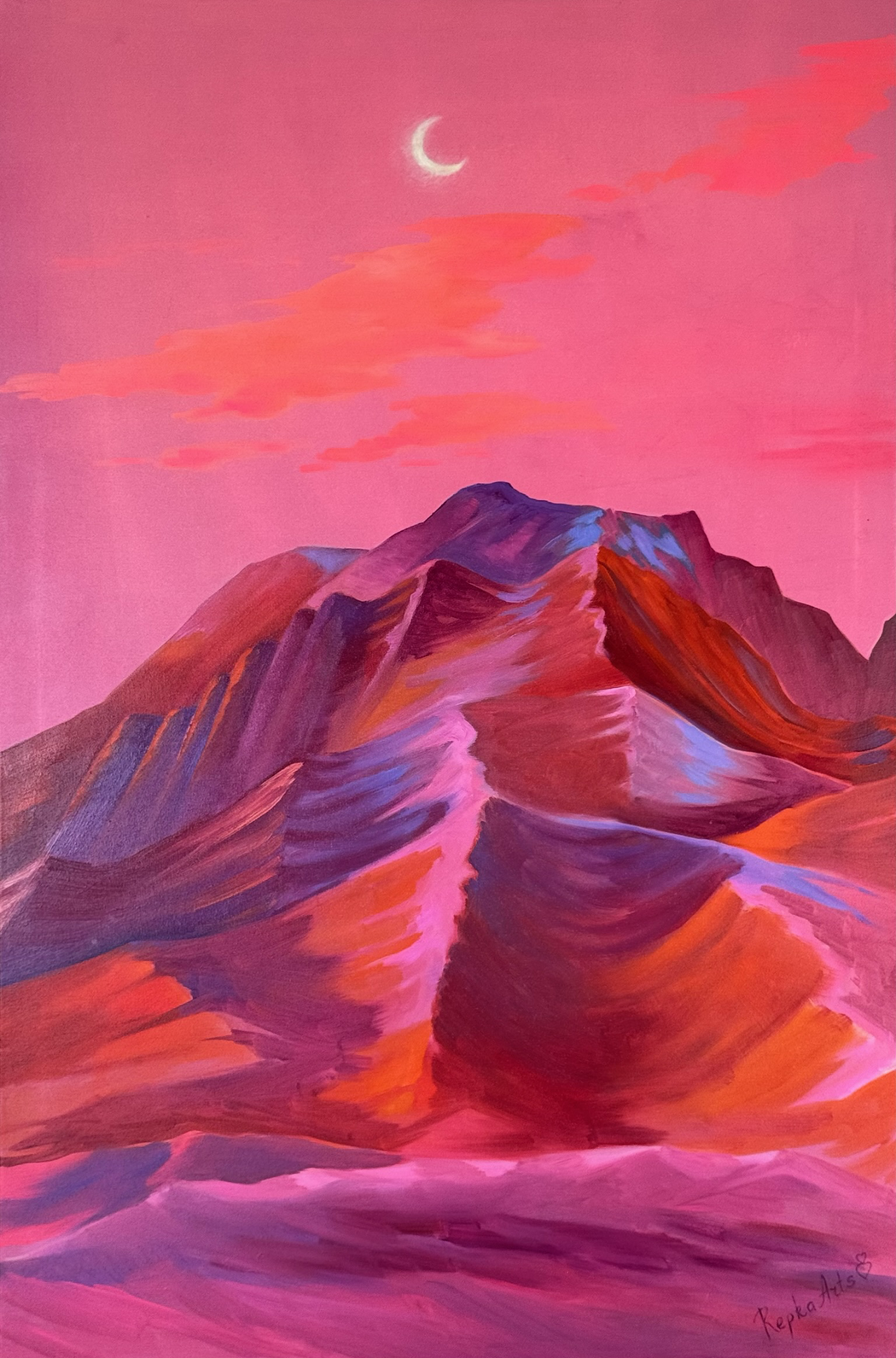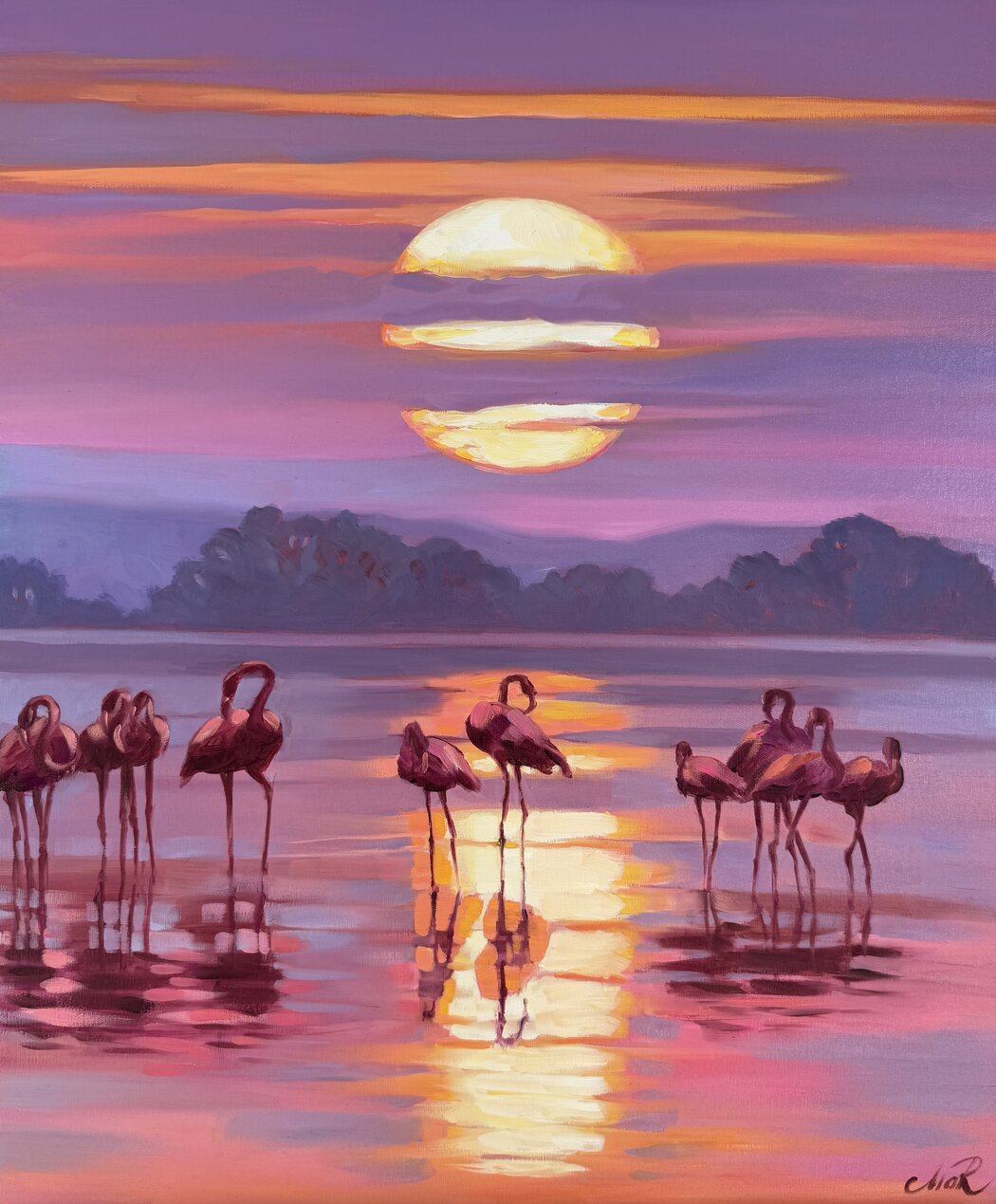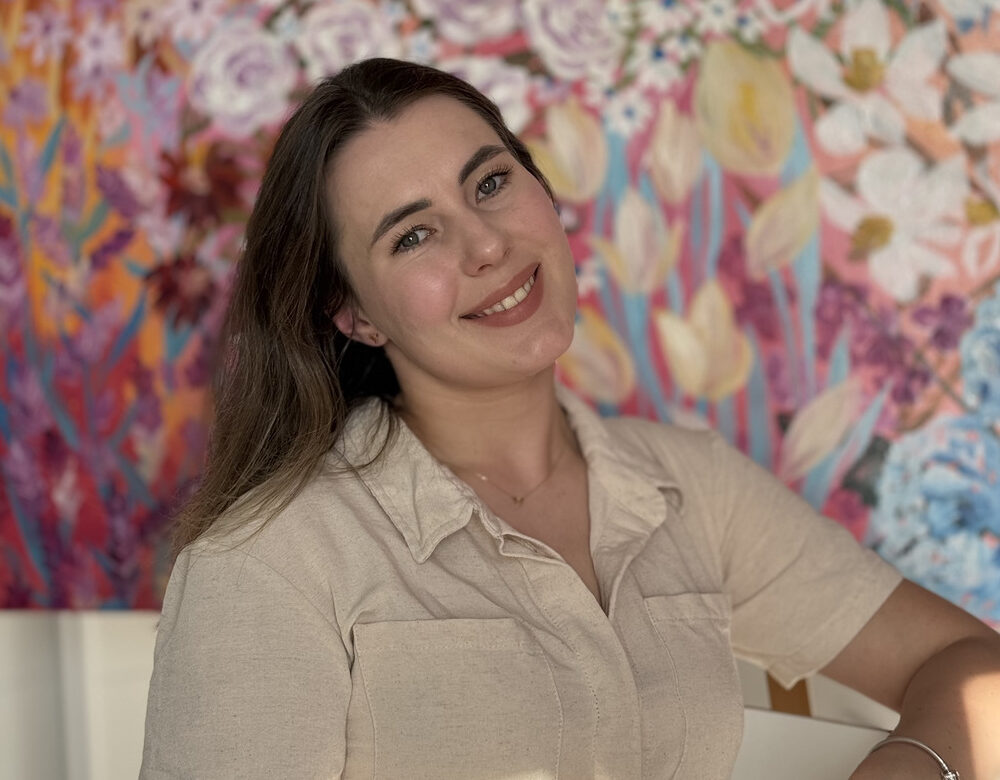Maryna Riepnova
Your ‘Pink Mountains & Succulents’ series blends surrealism with nature. Can you tell us more about what inspired you to explore these contrasts in your work?
You know, that series really came from a fascination with the quiet drama of the natural world, especially those still moments like sunrise. There’s something inherently surreal about the colours and shapes you find in nature if you really look closely – the way a dune curves, the unexpected resilience of a succulent. I wanted to push that a little, to bring out the almost dreamlike quality that’s already there and see what happens when you blend that with a touch of the unexpected.
How does your Ukrainian heritage influence your use of colors and forms in this series?
That’s an interesting question. Growing up in the south of Ukraine, my art education was very much rooted in Impressionism. We focused on capturing light and shadow with bold, bright colours, often with a relaxed, sun-drenched mood. I think that early immersion in such a vibrant and light-filled style definitely instilled in me a love for a rich palette and a way of seeing and interpreting forms that plays with sunlight. While the subject matter of this series might be different, that underlying feeling for bold brushstrokes and luminous colours, a direct result of my South Ukrainian training, definitely finds its way into my work.
 Maryna Riepnova | Dune
Maryna Riepnova | Dune
What role does plein air painting play in your creative process? How does painting outdoors affect your work?
Plein air is absolutely vital for me. Getting out there, feeling the sun on my skin, seeing the light shift in real-time – it’s a completely different experience than working from a photograph. It forces you to be present, to really observe the nuances of colour and atmosphere. The imperfections that come with painting outdoors, the breeze, the changing light, they all become part of the piece. It adds a layer of authenticity and spontaneity that I don’t think I could achieve otherwise.
The vivid pink hues in your landscapes evoke a dreamlike atmosphere. How do you decide on the colors and tones for each painting?
The colours often come from a feeling, an emotional response to a scene. Sometimes it’s a real sunset that just takes my breath away, and I want to capture that intensity. Other times, it’s more about creating a certain mood, a sense of wonder or tranquility. The pinks, in particular, can be so evocative – they can be soft and ethereal or surprisingly bold. It’s a very intuitive process, playing with the tones until they feel just right, until they capture the essence of what I want to convey.
In your artist statement, you mention creating works that encourage reflection. What message or feeling do you hope viewers take away from your series?
Ultimately, I hope my work offers a moment of calm, a little pause in the busyness of life. If someone can look at one of my paintings and feel a sense of peace or wonder, or if it sparks a memory or a feeling within them, then I feel I’ve achieved something. It’s about creating a connection, inviting people to slow down and appreciate the beauty that surrounds us, even in the unexpected places.
 Maryna Riepnova | Flamingos
Maryna Riepnova | Flamingos
How has living in Málaga, Spain, shaped the way you approach your art, especially in terms of landscapes and light?
Living here in Málaga has been truly transformative. The Mediterranean light is just incredible – that intense sun and the way it sculpts shadows, the explosion of vibrant colours in the flowers and the sea. It’s a constant source of inspiration, and it’s definitely pushed me to explore new ways of capturing light and colour. Interestingly, though the landscapes are so different from my hometown of Odesa, and the Spanish sun is much more intense, there’s a similar feeling I get when working with the light and colours in both places. Perhaps it’s a certain luminosity or a way the light interacts with the environment. Even though the nature is distinct, that fundamental feeling, that spark of inspiration from the interplay of light and colour, feels surprisingly familiar. It’s like tapping into the same source of beauty, just expressed through a different landscape.
What is your creative process like from the initial idea to the final brushstroke?
My process often begins with observing nature in its various states, really watching how it behaves – the way light shifts, the colours deepen in certain conditions. While my paintings are rooted in these real observations, I do like to enhance the colours, to dial up the drama and emotional impact. Interestingly, I rarely do preliminary sketches. Instead, I tend to dive straight onto the canvas with the main image in mind. I usually start by choosing a dominant mood colour, and that sets the tone for the background. From there, I begin to build the structural elements of the composition. Then comes the process of filling in the larger spaces with colour. Once that initial layer is dry, I start to define the details. It’s not unusual for me to revisit a piece over a few sessions. There’s a point where I need to step back, let it breathe, and then come back with fresh eyes to understand when it truly feels finished. Even though my work is based on real-world studies, there’s always a significant space for improvisation and allowing the creative flow to guide the brushstrokes.


Leave a Reply